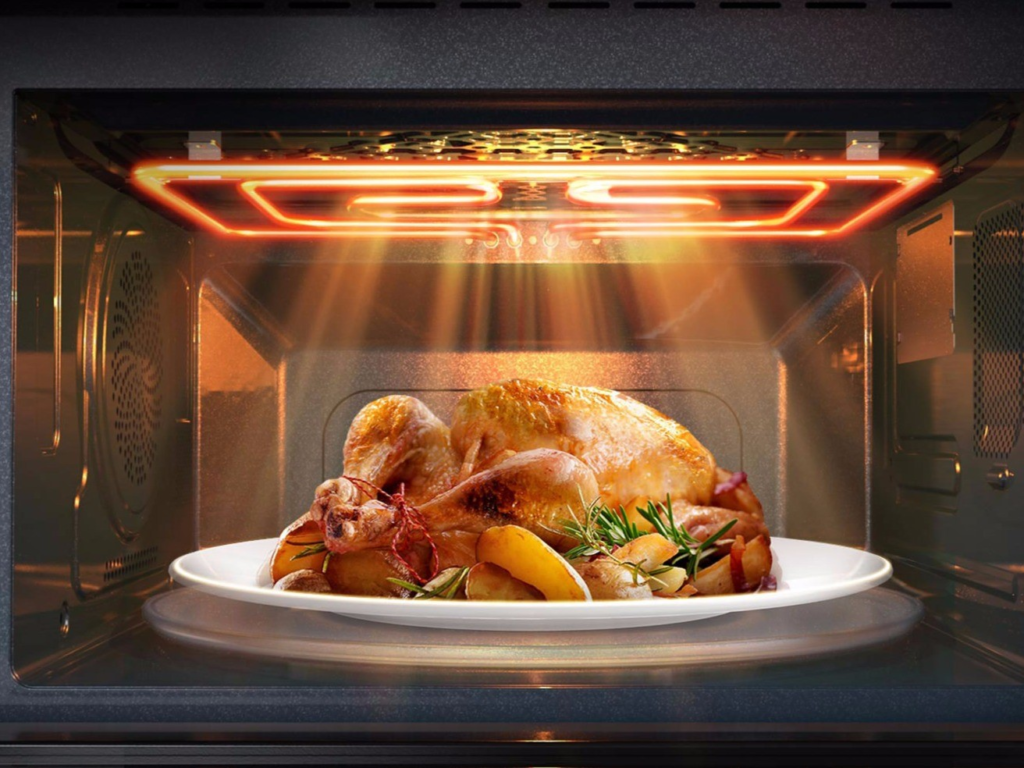
Microwave ovens emit non-ionizing electromagnetic waves that cause water, fat, and sugar molecules in food to vibrate rapidly. This friction generates internal heat, which spreads outward via conduction and convection. Although many people believe microwaves cook food from the inside out, they actually only penetrate the outer layer (about 1–1.5 cm); the inner parts cook as heat travels inward.
Microwaves don’t cook at “low heat” like stovetops. Instead, they pulse on and off to reach lower power settings. For example, a 50% setting means the magnetron cycles on half the time. Lower power settings are ideal for defrosting or cooking delicate foods evenly. Wattage affects speed—microwaves with higher wattage (e.g., 1000–1200 W) cook faster but may increase the risk of uneven heating if not used properly.
Microwaves can cause cold spots, especially in thick or dense foods. These spots may allow harmful bacteria to survive. To reduce risk:
“Standing time” is the period after cooking when food remains outside the microwave but continues to cook due to retained heat. This step is crucial—it helps even out temperature and ensures bacteria are destroyed. Standing time of 2–3 minutes is typically sufficient.
To ensure food is safe, use a thermometer to confirm it has reached the appropriate internal temperature. Poultry, leftovers, and casseroles should be at least 165°F (74°C). Stirring and checking in several areas is key because surface appearance may not reflect safety.
Microwaving food only partially (e.g., just to “preheat” or “soften” meat) is not safe. Bacteria may not be killed if food is not fully cooked in one continuous session. Always finish cooking immediately after defrosting or heating.
It is not recommended to cook stuffed poultry in a microwave oven. The stuffing often doesn’t reach safe internal temperatures fast enough, which can allow harmful bacteria to multiply.
Use the defrost setting or 30–50% power to thaw frozen food evenly. Always remove plastic or foam trays before microwaving. Rotate food halfway through thawing, and cook it immediately afterward—never refreeze thawed items.
When reheating leftovers, ensure even heating by:
Always use microwave-safe containers such as:
Avoid using:
To test if a container is safe: Microwave it with a cup of water for one minute. If the container stays cool and the water heats, it’s generally safe.
Aluminum foil can reflect microwaves and cause sparks (arcing). If absolutely necessary, use only small, smooth strips to shield parts of the food (e.g., wing tips), and keep foil at least one inch away from oven walls.
Yes. Microwaves use non-ionizing radiation, which does not make food radioactive. The ovens are designed with safety features like shielding and interlocks to prevent radiation leakage. They’re safe for use unless damaged or altered.